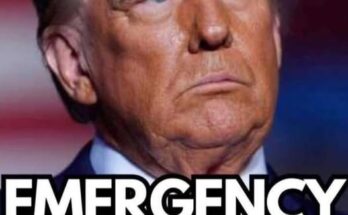For many of us, tomatoes have always been a kitchen staple. They’ve been sliced into summer salads, simmered into comforting sauces, and even blended into bright morning juices. Their flavor can be sweet, tangy, or deeply savory — and their versatility makes them one of the most reliable ingredients in the pantry.
But tomatoes are much more than a colorful side dish or a garnish on your plate. They’re a nutritional powerhouse that can support your health in ways you might not expect. Whether you’re looking to boost your heart health, protect your skin, or simply enjoy more vibrant meals, this humble fruit (yes, it’s technically a fruit!) is worth celebrating.
A Small Food with Big Nutritional Power
Tomatoes are naturally low in calories, making them an easy fit for weight-conscious diets. Yet inside their juicy flesh is a dense package of essential nutrients.
They’re an excellent source of vitamin C, which supports the immune system and helps maintain firm, healthy skin. Vitamin A keeps your vision sharp and your skin nourished, while vitamin K plays a critical role in blood clotting and maintaining strong bones.
And that’s just the beginning — because the real superstar in tomatoes is a natural compound called lycopene.
Lycopene: The Red That Protects
Lycopene is the antioxidant responsible for giving tomatoes their bright red hue, and it’s been the subject of dozens of health studies. Antioxidants like lycopene help fight free radicals — unstable molecules that damage cells, speed up aging, and contribute to chronic diseases.
Researchers have found that a diet rich in lycopene may help reduce the risk of certain cancers, particularly prostate cancer, while also protecting cardiovascular health. It’s no wonder nutrition experts recommend adding more lycopene-rich foods to your meals — and tomatoes are one of the best sources around.
How Tomatoes Support a Heart-Healthy Diet
If you’re looking to take care of your heart — and let’s be honest, after 60, it’s something we all think about — tomatoes can be a simple yet powerful ally.
Eating tomatoes regularly may help lower LDL cholesterol (the “bad” kind) and support healthy blood pressure levels. This is thanks in part to their potassium content, which helps regulate fluid balance and supports healthy circulation.
Reducing swelling, avoiding excessive fluid retention, and keeping blood vessels in good shape are all important for preventing heart disease — and tomatoes can play a role in each of these.
Fighting Inflammation from the Inside Out
Joint stiffness, arthritis, and other inflammatory conditions can make daily life harder as we age. The antioxidants and phytonutrients in tomatoes have been shown to help combat inflammation, easing symptoms for some people.
What’s even more important is their role in reducing silent inflammation — the kind that doesn’t cause obvious symptoms but can quietly contribute to heart disease, diabetes, and other long-term health problems.
Tomatoes for Skin Health and Sun Protection
Here’s a bonus benefit that might surprise you: tomatoes can help protect your skin from sun damage.
While you should never skip sunscreen, research suggests that lycopene offers extra defense against harmful UV rays. On top of that, the vitamin C in tomatoes encourages collagen production, which keeps skin supple, elastic, and youthful-looking.
It’s a beauty boost and a health benefit, all in one bite.
Fresh or Cooked? The Answer Might Surprise You
Fresh tomatoes are wonderful for salads and sandwiches, but cooking them can actually increase the availability of lycopene in your body. Heating breaks down cell walls in the tomato, releasing more of this antioxidant.
Pairing cooked tomatoes with a healthy fat like extra virgin olive oil — think homemade marinara sauce or a slow-roasted tomato side dish — can help your body absorb even more lycopene. Just be mindful of added salt and sugar in store-bought sauces.
A Few Precautions
For most people, tomatoes are a healthy and safe choice. However, their natural acidity can trigger discomfort for those with acid reflux or frequent heartburn. If that’s you, consider reducing portion size, cooking tomatoes with sweet vegetables like carrots, or adding a pinch of baking soda to sauces to lower acidity.
Easy Ways to Add More Tomatoes to Your Day
- Breakfast: Add cherry tomatoes to an omelet or enjoy them sliced on whole-grain toast with avocado.
- Lunch: Toss fresh tomatoes into a leafy salad or blend them into a chilled gazpacho.
- Dinner: Simmer them into hearty soups, rich pasta sauces, or vegetable stews.
- Snacks: Roast grape tomatoes with herbs and olive oil for a sweet, savory treat.
More Than Just a Kitchen Staple
Tomatoes are one of those rare foods that are as good for you as they are for your recipes. They bring vibrant color to your plate, rich flavor to your dishes, and protective nutrients to your body.
So the next time you slice into a ripe tomato, remember — you’re not just adding taste to your meal, you’re adding protection for your heart, your skin, and your long-term health.
They may be small, but in the world of healthy eating, tomatoes are a giant.



